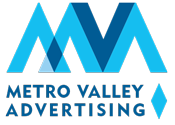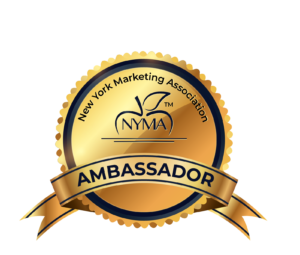Social media has changed how law firms attract clients. Today, people expect to meet a firm online before they make a call. If your firm isn’t visible, you will lose leads you never saw. That is where a good social media plan comes in. Properly executed personal injury law firms can build trust and leads with social media
For personal injury practices, the trust barrier is critical. People usually don’t instantly hire a lawyer after an accident. They research, compare, and check credentials first. Social media can close that gap.
How social media works
Social platforms use algorithms to decide what users see. They reward content that gets engagement (likes, comments, shares). If your content keeps people longer, the algorithm shows it more. Reach depends on how well your content matches what your audience wants.
What “lead generation” means in the PI legal space
Lead generation is getting contact inquiries from people who may need your services. For personal injury, that means potential clients who had accidents, injuries, or losses. The goal is to convert those inquiries into consultations.
You might run ads to capture names, emails, phone numbers, or schedule a call. But more than volume, you want quality. A lead must have a plausible case.
Why trust is the bridge
Trust is the fuel that powers lead conversion. Someone sees a post, then visits your page, then contacts you. If they don’t trust you, they won’t reply. Social media helps you show who you are before they call. Your posts, stories, comments all shape their view of your credibility.
Pros of Social Media for PI Firms
You reach people at all stages, not just those ready to hire.
You build brand visibility and legal authority over time.
It costs less per touch than many traditional methods.
You can narrowly target people by location, interest, and demographics.
Cons of Social Media for PI Firms
Organic reach is low, most content won’t be seen unless boosted.
You face regulatory and compliance risks (bar rules, claims).
You need time and resources to create consistent content.
Negative comments or reviews can harm reputation if not handled well.
Organic posting (no paid boost)
Use this for brand building, sharing insights, and engaging followers. Over time it builds credibility. But free reach is limited. Results are slow.
Paid social media advertising
Use this to amplify reach, drive actions (calls, form fills), and get in front of qualified people fast. But there’s a cost. You must monitor ad fatigue and compliance.
When to use which and how to balance both
You should blend them. Use organic to build trust and feed your audience. Then use paid when you want to scale or push offers. Don’t rely on one alone.
The Benefits of Using Both Organic + Paid Together
Organic content fills your funnel with warm prospects. Then paid ads push them toward action. Posts with real comments boost your ad’s credibility. You can drive traffic from ads to your content pieces, and then retarget people who interacted.
You also learn what content works organically. Then you scale it with paid. This is efficient, you waste less money on content that doesn’t resonate.
Crafting a Good Mix of Content
You need variety to keep readers coming back.
Educate: “What to do after an accident,” timelines, steps to take.
Inform: Legal updates, changes in law, FAQs.
Social proof: Testimonials (with permission), case highlights (anonymized).
Humanize: Share your team, behind-the-scenes, community work.
Calls to action: Offer a free guide, checklist, or consultation.
Experiment: Polls, quizzes, ask-me-anything formats.
Rotate formats. Some posts are light and visual. Others are longer and educational.
Use of Images in Social Media
Visuals matter, they catch attention. A strong image can double engagement. Use infographics, simple charts, office scenes, team photos.
Stick to branded templates so people recognize your style. Use readable text over images. Don’t crowd visuals with too much text.
Always watch compliance. Don’t use client photos without consent. Avoid misleading images (e.g. dramatic “before/after” that exaggerates outcomes).
Use of Video in Social Media
Video builds trust fast. People see your face, hear your voice, sense your tone. Use short clips, explainer videos, stories from your team, or neutral client stories. You must subtitle all video. It is estimated the 85% of all video is watched with the sound off!
Use reels, stories, TikTok (if allowed), LinkedIn video, or Facebook. Always use captions for silent viewing. Keep the intro tight, hook them in first few seconds.
Include disclaimers, avoid guaranteeing results, anonymize sensitive detail.
Best Practices & Rules to Follow
You must know your state’s rules and your bar’s rules about legal advertising. Claims must be true and verifiable. Disclaimers may be required.
Use a social media policy: approval process, brand voice, content review.
Be consistent, decide on a posting schedule and stick to it.
Monitor comments and messages. Respond quickly and politely.
Track analytics: link clicks, impressions, cost per lead. Use that data to refine.
Always test: try different headlines, visuals, audiences.
Qualify leads early. Ask screening questions. Filter out low-value ones.
Continue follow-up: nurture leads with content, retargeting, email sequences.
Platforms & Channel Strategy
Which networks work for PI firms? Facebook is key for older audiences. Instagram also works (especially stories) for younger prospects. LinkedIn can help for referrals, networking, and credibility.
See where your audience spends time. If you don’t see traction on one platform, shift investment.
Don’t just cross-post. Tailor your message and format per platform. What works on LinkedIn may not work on Instagram.
Lead Capture & Conversion Paths
Your social campaigns should link to landing pages. These pages must match the ad message.
Offer lead magnets like a “What to Do After a Crash” guide, or a “Free Merit Review” checklist.
Keep forms simple—name, email, phone—but you can ask one or two qualifying questions. Always optimize for mobile.
Use retargeting: people who visited your content but didn’t act should see ads again.
Integrate leads into your CRM or intake system. Make sure there’s follow-up within 24 hours.
Measurement & KPIs
Track impressions, reach, engagement, CTR, and cost per lead.
Then measure lead quality: how many calls, how many signed.
Decide attribution: did your organic or paid effort begin the interaction? Or close it?
Benchmark against past campaigns. Set realistic goals.
Adjust continually. Pause ads that don’t work and reallocate budget.
Challenges & How to Overcome Them
If you have limited budget or staff, start small. Test one channel first.
Legal rules may restrict certain claims or formats. Work with compliance early.
Creative fatigue sets in. Rotate content formats and repurpose assets.
Negative comments? Respond respectfully or hide if they violate rules.
Proving ROI can be tough. Use clear metrics, report consistently, and show improvement over time.
Conclusion – Build Trust and Leads With Social Media
Social media works for personal injury advertising when you use it strategically. You can build trust and leads with social media.
Start by auditing your social mix. Try one new tactic or ad this week. Measure, learn, and scale from there. But most importantly, have a plan.
If you want help building or reviewing your social media lead strategy, we would be glad to assist.



